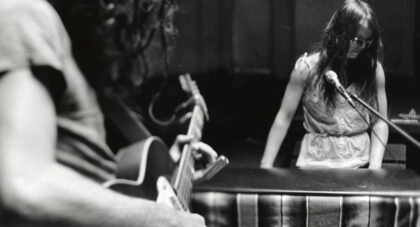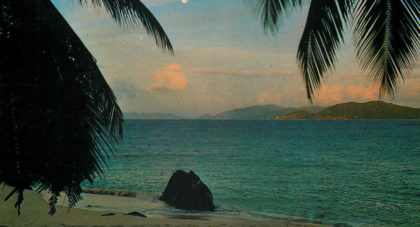There’s a sound in Harvey Mandel’s “Long Wait,” the last song on Side One of his 1968 debut, "Cristo Redentor." 1:43 into a searing, grinding, winding guitar passage, there’s a little … “plink.” It’s a moment of subtle yet daring ingenuity, the kind Harvey Mandel has wielded in spades throughout his 50-year career.
Diggers know. Somewhere in the bin between Malo and Mandrill, you’ll find the records. Cristo Redentor, Righteous, Baby Batter, Shangrenade. Maybe you’re lucky enough to find a Cristo promo in mint condition, with the shiny gold Philips label instead of black. Long a favorite of in-the-know DJs, producers and gearheads, Mandel has been sampled by Del The Funky Homosapien and Nas, and he’s played in Canned Heat, with John Mayall, and on The Rolling Stones’ Black And Blue LP.
Today is Harvey’s 70th birthday, but it is not a happy one. He was diagnosed with nasal cancer in 2013, and has undergone sixteen surgeries. The type of cancer he has requires very specialized surgery by a top doctor in Chicago who does not accept health insurance. This is all fully disclosed on a website run by his sister at Help Harvey Mandel. Harvey has had to pawn his guitars and sell his publishing to stay afloat. He lost his only son and his mother in recent years. Now his dog Buck has cancer too. And Harvey faces several more surgeries. We all hear about musicians who fall on hard times late in their careers, yet his seems an especially cruel turn.
Harvey Mandel :: Cristo Redentor
Mandel grew up in Chicago and started playing guitar at 16, learning The Ventures’ Walk Don’t Run LP note for note. He met Sammy Fender, a black blues musician who took him down to Curley’s Twist City, a crucible of Chicago blues innovation. After a few months jamming with the regulars and his own combo, he could hold his own with anybody. He played with them all; Howlin’ Wolf, Muddy Waters, Buddy Guy. “You could name a list of 100 well known blues people”, he said. “I got to play with all of them at one time or another in Chicago.” He ran alongside locals Steve Miller, Charlie Musselwhite, Mike Bloomfield, and Barry Goldberg, all part of the burgeoning scene. Bill Graham invited Musselwhite and Mandel out to The Fillmore in San Francisco in August 1967 as the first of three on a bill with Electric Flag and Cream. He recalled in 2011, “I came in from Chicago with this little Fender amplifier with one 12” speaker and I look up onstage and here’s Eric Clapton with a wall of Marshalls…And he was so cool, I asked him ‘Think I could borrow one of those things during my set?’ No problem.”
Only the good shit. Aquarium Drunkard is powered by its patrons. Keep the servers humming and help us continue doing it by pledging your support.
To continue reading, become a member or log in.


